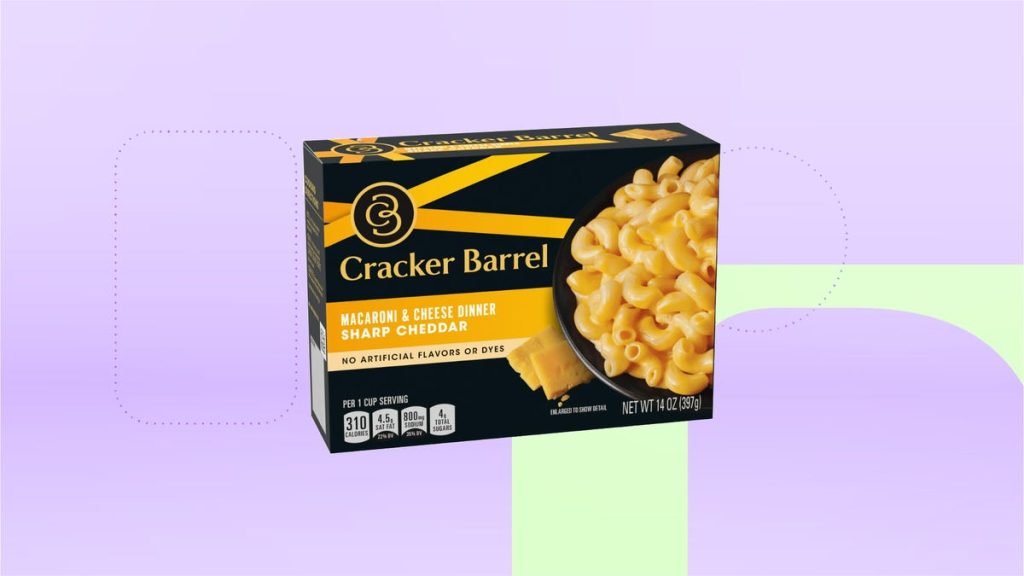A culinary journey through the world of boxed mac and cheese reveals surprising results, challenging childhood favorites and crowning a new champion. This exploration began with a deep-seated love for mac and cheese, a staple since early childhood. Kraft, the initial gateway to this cheesy paradise, held reign for years until the discovery of Velveeta, a revelation that expanded the horizons of mac and cheese possibilities. This sparked a lifelong quest to sample every mac and cheese variety imaginable, transforming from a simple consumer to a discerning connoisseur. This quest culminated in a comprehensive taste test of nine popular stovetop mac and cheese brands, purchased from a local Walmart, prepared according to package directions, and meticulously evaluated.
Cracker Barrel emerged as the unexpected victor, dethroning long-held favorites. Its rich, intensely cheesy flavor, combined with perfect creaminess and a pleasing golden hue, set it apart. The pasta cooked to an ideal consistency, neither soggy nor dry, and the preparation was remarkably simple, requiring no milk or butter. Despite its higher price point compared to other brands, the superior quality justifies the investment. Velveeta, a sentimental favorite from childhood, secured a respectable second place. Its creamy texture and vibrant golden color remain appealing, and the ease of preparation, mirroring Cracker Barrel’s simplicity, adds to its convenience. While not quite matching Cracker Barrel’s richness, Velveeta remains a strong contender.
Cabot, a brand renowned for its cheese, delivered a commendable performance. The robust cheese flavor, while powerful, remained balanced, and the creaminess was impeccable. The use of less milk than other brands contributed to the ideal consistency, preventing the noodles from becoming overly saturated. The small shell pasta shape offered a welcome departure from the traditional elbow macaroni. Annie’s, initially underwhelming, grew in appreciation with each bite. Its subtle cheese flavor, a contrast to the bolder profiles of other brands, offered a nuanced experience. The soft, easily chewed pasta and the recipe’s requirement for less milk added to its appeal.
Kraft, the childhood staple and catalyst for this mac and cheese obsession, landed disappointingly in the middle of the pack. Its flavor, once captivating, now registers as average, lacking the cheesy punch of memory. While creamy, the texture suffered from excessive liquid due to the recommended quarter-cup of milk, resulting in a runnier consistency. Mac A Roni, Rice A Roni’s venture into the mac and cheese realm, offered a rich flavor but with a peculiar aftertaste. Similar to Kraft, its creaminess was compromised by excessive liquid, highlighting the detrimental effect of too much milk.
Goodles, while boasting a higher protein content than other brands, suffered from similar drawbacks. The flavor, though rich, lacked appeal, and the runny consistency further detracted from the experience. Its orange hue, a departure from the preferred yellow, also contributed to its lower ranking. Great Value, Walmart’s private label mac and cheese, proved to be the least appealing. The chewy pasta, lackluster flavor, and excessive liquid resulted in a disappointing experience. The minuscule cheese packet, easily lost amongst the pasta, presented an additional inconvenience. Its only redeeming quality was its exceptionally low price.
Finally, Cheetos Mac and Cheese, a seemingly promising fusion of two beloved snacks, proved to be a disastrous mismatch. The overwhelming Cheeto dust flavor, pungent aroma, and vibrant orange color created an off-putting sensory experience. While the spiral noodles offered a textural variation and the creaminess was adequate, the overall flavor was irredeemable. This taste test highlights the importance of personal preference in the world of mac and cheese. While objective criteria like creaminess and flavor intensity play a role, subjective tastes ultimately determine the ultimate champion.
One key takeaway from this experiment is the significant impact of milk quantity on the final product. Adhering strictly to package instructions often resulted in excessive liquid, diluting the cheese flavor and creating a runny consistency. A recommendation arising from this is to use less milk than prescribed, starting with two tablespoons and gradually adding more until the desired creaminess is achieved. This allows for greater control over the texture and prevents the pasta from drowning in a pool of cheesy liquid. Similarly, reducing the amount of butter can enhance the overall experience. While butter contributes to creaminess and flavor, excessive amounts can overwhelm the delicate balance of the dish. Experimenting with reduced butter or alternative fats, such as oils or non-dairy options, can lead to surprisingly satisfying results.
This mac and cheese odyssey underscores the evolution of taste and the power of nostalgia. While childhood favorites may hold sentimental value, revisiting them with a more discerning palate can reveal unexpected flaws. This exploration emphasizes the importance of remaining open to new experiences, as evidenced by the discovery of Cracker Barrel, a brand previously unknown in the mac and cheese arena. This journey also serves as a reminder that even the simplest of dishes, like boxed mac and cheese, can offer a surprising depth of flavor and texture. By approaching each bowl with a curious mind and a willingness to experiment, one can uncover hidden gems and elevate a childhood comfort food to a gourmet experience. The quest for the perfect mac and cheese continues, and with each new brand and flavor combination, the possibilities seem endless.










